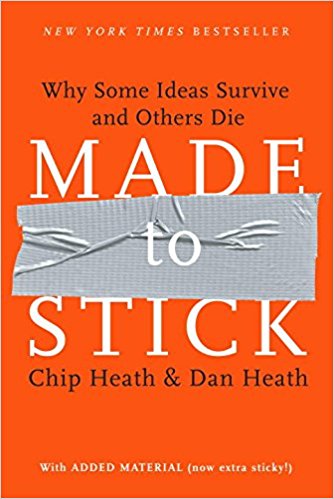
Last week, I was attending a keynote presentation by the CEO of one of the biggest Belgian banks. He was presenting the story of the digital transformation of his bank and he brought it as if it was a visionary story. And although the man certainly had excellent presentation skills, I somehow got annoyed with his storyline. Probably in the first place because it felt like 2007 was back with cliché-slides as “Shift Happens”, “The Consumer is in Control” and “Remember Altavista? Look at what Google Did!”. But the second reason for my annoyance had to do with something more profound. He was preaching the “customer-first”-mantra, while in reality, his story had absolutely nothing to do with customer-first. It was very obviously “Bank-First”, under the disguise of “we want to make it more simple for the customer to buy more stuff”.
In my view, his keynote sinned against three cardinal sins of customer-centric innovation. And I want to argue that you can find these three cardinal sins in every digital transformation pitch by gurus, consultants and managers. So what I want to do is to put the spotlight on each of these three sins and I want to use the next blog post to suggest how you can transform these cardinal sins into decisive action.
Cardinal Sin 1: The customer as consumer at the heart of the strategy
At the heart of all these digital transformation keynotes sits the demanding, narcissistic customer. This customer is said to be spoiled by the speed and simplicity of Google, the absurd logistics of Amazon and the mobile interface-perfection of Apple and Facebook. What follows is that all these corporations assume that it’s exactly this demanding and spoiled attitude what makes this customer so different from the good old days. The CEO shared an example in his keynote of how his bank redesigned a front-office and back-office process to allow a customer to open an account in a couple of minutes on his smartphone. The bank would reward this customer with € 5, allowing him to walk into a Starbucks and buy a coffee just minutes after opening his account.
The problem with this example is that the banker looks at his customer with a “consumer”-frame in his mind. But when you look at the customer as a moody, demanding, click-trigger happy cowboy, and you build your processes and services around this persona, you’re doomed to lose the battle. Because the real challenges where every digital transformation project should focus on, are the challenges and problems that the human behind the customer is facing. And those problems are on an entirely different level: An incapability to build wealth, or to become financially independent. 95% of the people are financially illiterate and could really use some help to construct financial buffers, make smarter investments, generate passive income, etc. Thát’s the real design-briefing for which financial institutions need to develop intelligent answers. A better interface just a simple hygiene-factor for which they do need to catch up. To design your entire digital infrastructure around a spoiled persona is, to put it mildly, incomplete. And to put it more bluntly: out of touch with the real world.
Cardinal Sin 2: Evil KPI’s
Every time you hear Mark Zuckerberg doing an interview, he keeps insisting that the interest of the Facebook-community is central to everything the company does. In a recent interview on Reid Hofmann’s Masters of Scale-podcast, he says: “Our mission at Facebook is to discover where our community wants us to go.” With this mission in mind, Facebook employees conduct hundreds of experiments each day. Mark Zuckerberg is convinced that the world will be a better place if Facebook discovers what people want.
The only problem with this mantra is that Facebook has become a public company in 2012. And once a company goes public, its primal reason for existence is to create shareholder value. And the number one metric to create shareholder value is “engagement”: when as many people as possible, return to Facebook as many times as possible to serve them as many ads as possible.
Facebook-scientists, Facebook-algorithms and the Facebook-AI work really hard to generate a maximum amount of “engagement”, which, frankly, is newspeak for addiction: 1) The company has perfected the way notifications trigger little dopamine-shots in the brain in order to get people to return to the platform over and over again. Nir Eyal describes this addictive design in the book Hooked. 2) The algorithms and the Facebook-AI also know that the best way to get people more engaged is by fueling outrage. Nothing fuels better engagement than extreme content. The reason why a relatively small Russian troll-farm could have such a significant impact on the US-elections is that they correctly understood that outrage is the fuel that drives the Facebook-algoritms.
The point I’m making is this: Although Facebook’s rhetoric may be full of storytelling on “connecting” and “creating a better, more open world”, it’s business metric drives the behaviour of the company in a different direction. To maximize “time-on-device” and “engagement” to generate as many opportunities as possible to serve ads to people, has, in reality, led Facebook, its employees, its algorithms and its Artificial Intelligence to steer on more evil KPI’s like Facebook-addiction, craving for constant social recognition and political polarization.
This brings me back to the banker. His “digital transformation with the customer at the center” eventually also steers on traditional banking-KPI’s of selling as many products and triggering as many transactions as possible. Of course, there’s nothing wrong with this. The bank needs to make a living. However, if they would also steer on real customer-centric KPI’s, I guess they would be much more successful. If they were to focus on maximizing spending power, maximizing investment capacity or capacity to loan, maximizing interest,… they would easily be able to come up with tons of new services for which their customers would never want to switch to another bank again.
Want applied Behavioural Design delivered to your inbox?
Join over 5.000 forward-thinking leaders, innovators and professionals who use our insights to amplify their impact, growth and transformation by injecting behavioural intelligence into their organisation and projects.
Cardinal Sin 3: An inadequate understanding of the good life.
Behind all these digital transformation stories I never hear the philosophical question whether all these changes are actually meaningful. If the goal of all these digital transformation projects is to help a spoiled consumer to buy everything faster and more frictionless, then the vision they have on humanity is incredibly limited. You can read in it the fulfilment of the ultimate corporate wet dream of reducing every human to a consumer.
Today, this reductionist consumerist vision leads to two crises of epic proportion. Of course, there’s first and foremost the ecological crisis. The speed with which our consumption behaviour is exhausting the earth and its vital resources is not sustainable. Read Kate Raworth’s “Doughnut Economics” or watch her Ted-talk.
But next to this ecological crisis we are also in the middle of a more profound psychological crisis. The more gratification we can buy, the less we seem to enjoy. The more we pursue impulses and individual greed, the emptier our existence appears to become. This crisis of meaning could well become the biggest crisis of the 21st century. It is funny in that context to observe that all those “Silicon Valley”-bobos are utterly obsessed with Stoic philosophy. Because they no longer know how to enjoy, they go back to the answers formulated two millennia ago.
In his keynote, the banker does not say a word about how the derailed banking world wants to play a meaningful role again in the lives its customers. We know what happened in 2008 with the money people entrusted to the banks. That turned out to be nothing more than casino money for speculation to increase the profits of the banks and the bonuses of the bankers. The fantastic challenges for the banks are nevertheless obvious: Helping freelancers to make ends meet. Protecting the middle class from loss of wealth and poverty in their old age (which is something the Dutch Rabobank is actively working on for example). Investing in projects that promote public prosperity. Boosting general well-being. Helping people to make their capital work for them. Looking for new ways to let the abundance of capital in the market find their way to entrepreneurs. Managing an aging population. Speeding up urbanization. Financing sustainability,…
There are so many opportunities to use digital transformation to become truly indispensable in the economy. So many possibilities to become incredibly relevant, once you put the human behind the customer at the center of your digital transformation. Simply start with replacing this spoiled persona at the heart of your transformation story with the citizen who has more and more difficulties to live a carefree life in increasingly difficult times.
Tom De Bruyne
Co-Founder SUE Amsterdam and the Behavioural Design Academy.
Cover image by April under Creative Commons License.
How do you do. Our name is SUE.
Do you want to learn more?
Suppose you want to learn more about how influence works. In that case, you might want to consider joining our Behavioural Design Academy, our officially accredited educational institution that already trained 2500+ people from 45+ countries in applied Behavioural Design. Or book an in-company training or one-day workshop for your team. In our top-notch training, we teach the Behavioural Design Method© and the Influence Framework©. Two powerful tools to make behavioural change happen in practice.
You can also hire SUE to help you to bring an innovative perspective on your product, service, policy or marketing. In a Behavioural Design Sprint, we help you shape choice and desired behaviours using a mix of behavioural psychology and creativity.
You can download the Behavioural Design Fundamentals Course brochure, contact us here or subscribe to our Behavioural Design Digest. This is our weekly newsletter in which we deconstruct how influence works in work, life and society.
Or maybe, you’re just curious about SUE | Behavioural Design. Here’s where you can read our backstory.


